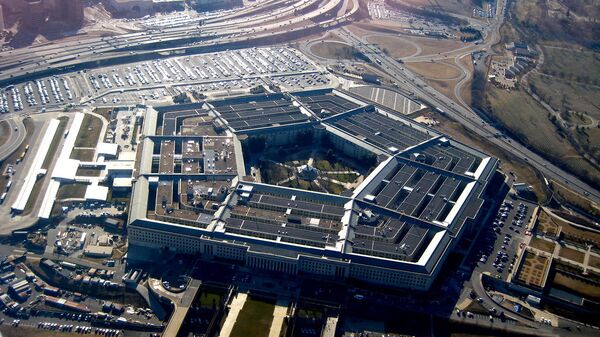The World Health Organization (WHO) defines a pandemic as the “worldwide spread of a new disease.”
According to Military Times, an executive order issued by the Joint Chiefs of Staff and approved by US Defense Secretary Mark Esper earlier this month advised Northern Command leaders to prepare for outbreaks of the virus.
The US Navy, Marine Corps and Army also issued service-wide messages on Tuesday and Wednesday referring to the executive order directing the US Northern Command to follow the guidelines outlined in a document titled, “Defense Global Campaign Plan for Pandemic Influenza and Infectious Diseases 3551-13.”
The document outlines directions to prepare for the widespread outbreaks of diseases. The US Northern Command also announced Wednesday that the Joint Chiefs of Staff directed them on February 1 to begin “prudent planning” for the disease. According to the Military Times, any service members who have been to China since February 2 will be confined to their residences. Any service members who live in an open barracks or share a bathroom with other members will be quarantined in a temporary lodging facility for two weeks. Any quarantined service members will also be assessed daily by medical personnel.
However, despite the fact that the US Northern Command has started planning for a pandemic, Navy Lieutenant Commander Mike Hatfield said in a statement to Military Times that the planning does not indicate a greater likelihood of an event developing.
“As military professionals, planning for a range of contingencies is something we owe the American people. We coordinate with other combatant commands to assess potential impacts in the event of a pandemic, and we ensure the US military is poised to respond as required. The military profession fosters a culture of planning, and the fact that we are coordinating planning efforts across the geographical combatant commands is consistent with how we prepare to respond, if directed,” Hatfield explained.
According to a document released Wednesday, titled “US Marine Corps Disease Containment Preparedness Planning Guidance for 2019 Novel Coronavirus,” commanders are expected to review disease containment plans and take precautionary actions to safeguard service members, installations and ships.
In addition, commanders are expected to “review, update and validate existing disease containment plans and policies in order to implement procedures for response, isolation, quarantine, restriction of movement, and community-based intervention.”
“The US Marine Corps will prepare for potential outbreaks of 2019-nCoV. If an outbreak occurs, the Marine Corps mitigates, responds and recovers from the effects in order to maintain force readiness,” the report adds.
Meanwhile, the Navy also issued a service-wide message this month that gives commanders discretion to decide whether they should confine service members. The directive also states that service members who have visited mainland China, Hong Kong or Macau since February 2 may be subject to quarantine.
The Army released a service-wide message January 31 outlining coronavirus symptoms and providing instructions on how to reduce the chance of infection.
Currently, six US bases are holding evacuees from China: March Air Reserve Base, Travis Air Force Base and Marine Corps Air Station Miramar, all in California; Fort Carson in Colorado; Lackland Air Force Base in Texas; and Camp Ashland in Nebraska.
The US Defense Department announced last week that 11 more bases may be made available to the Department of Health and Human Services (HHS) to quarantine more evacuees from China. The quarantine measures were announced on January 3.
Alex Azar, the US secretary of HHS, declared that any foreign nationals, other than immediate family of US citizens and permanent residents, who had traveled to China within the previous 14 days could be denied entry into the US. As for US citizens who have been in Hubei Province, they "will be subject to up to 14 days of mandatory quarantine to ensure they’re provided proper medical care and health screening.”
According to the latest data from the Johns Hopkins University Center for Systems Science and Engineering, more than 60,000 people worldwide have been infected with the coronavirus. The disease has led to 1,370 deaths, 1,310 of which occurred in Hubei.


